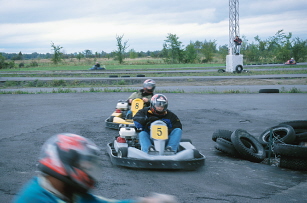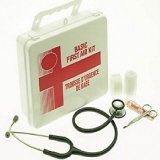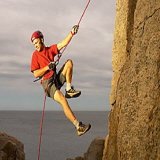Go Kart Frames - Choosing the Right One for You


What are the perfect frames or chassis for your go kart? It should be lightweight, yet powerfully durable material capable of launching a kart forward without the slightest wear or tear. Rare material that comes with the likes of professionally built popular race-cars like the illustrious McLaren.
Let's discuss the intricacies and place a perspective on the chasis for your go-kart. The chassis is by far the most important piece of this machine. The construction is paramount in maintaining a solid go-kart. What constitutes a chasis? Think of a chasis simply as parts holding components together. In the case of these speedsters, the frame is welded together by torsion bars. Stiff frames are a result of shorter bars crossed together, and more flexible ones are associated with longer bars.
 Stiff frames that do not provide flexibility were the backbone of earlier go-karts and broke down easily. First off, simpler go-karts do not have the specifications needed (most important, suspension and tire traction) to ease the punishment that the chasis will go through while turning, accelerating, and stopping.
Stiff frames that do not provide flexibility were the backbone of earlier go-karts and broke down easily. First off, simpler go-karts do not have the specifications needed (most important, suspension and tire traction) to ease the punishment that the chasis will go through while turning, accelerating, and stopping.
A lack of traction on your tires will cause uneven weight transfer and stability on your chasis, ripping one or both sides loose at the same time. In essence, the chasis is responsible for determining how well your vehicle moves zipping on asphalt, concrete, or dirt - dictating your performance on wide turns and shorter turns.

A sturdy, well-built chasis is the key to manoeuvring well on the track, especially when turning. Wait, isn't a chasis supposed to be resistant to the rigors and demands of punishing your go-kart as it explodes forward? Of course - but the most important criteria for an excellent chasis is to negotiate turns well.
The chasis is directly responsible for how well go-karts turn left and right. Weaker go-karts with cheap components are known to slide and drift along turns - in some instances, flipping onto its side. "Side bite" is referred to keeping a go-kart planted to the track without sliding. Without the proper chasis, go-karts will manoeuvre out of control.
The design of the go-kart chassis has everything to do with how well it moves on turns and maintaining side bite. If the width of the rear rails (go-kart frames constitute front rails and rear rails) is narrow, with measurements ranging from 24¨ to 25¨ - from "kingpin" to "kingpin", the ends of the rail - it will have less side bite.
Wider rails barely ever exceed 30¨ on standard go-karts. The dynamics of the front and rear rails can be effectively pictured using this example: suppose you had two bottles - a two-gallon jug and a 16 oz. water bottle. Giving it a swift, hard poke to its side - which container has the best chance of tipping to its side? If you guessed the water bottle, you guessed right! Wider rails provide stability and "foundation" while turning and cornering.
Choosing the right chasis for your go-kart can largely depend on the surface you are riding on. Whether it is asphalt, concrete, or dirt - different types of chasis behave differently according to surface. For example, a dirt track chasis should consist of a short front rail and a longer back rail. Dirt tracks place a lot of stress and challenge on the front rail and stiff back rails zipping through dirt can cut power to the engine while cutting a turn. The best frames for riding dirt tracks are ones with narrow fronts and longer backs, vice versa to asphalt and concrete.
The A-1 performance of a chasis largely depends on tire traction as well. Low traction tires (tires that do not "stick" well to the ground) are not grooved enough to withstand the rigors of the surface, rattling the stiff chasis to oblivion. It also causes uneven weight transfer throughout the go-kart, and that is a no-no for maintaining optimum control of your kart.
A major issue among karting enthusiasts is the durability and longevity of flexible frames. Exposure to punishing breaks and turns, along with the gruelling hits to track walls every now and then, can distort the chasis which cannot be "popped" back to its original condition. Experts recommend replacing the chasis every year.
The question over choosing the right go-kart chassis boils down to flexibility. High traction tyres and a stiff chasis is a recipe for disaster, causing your machine to turn stiffly and generate strenuous effort on the curves. Low traction tyres will cause uneven weight transfer and eventually break your chasis apart.
Options for a chasis mainly depend on what type of go-kart you're riding, as each go-kart and their engine work best under certain scenarios. Stiff frames are a staple of low horsepower 2 stroke and 4 stroke engines and flexible frames are found with higher horsepower engines. Remember, the more rigorous the circuit, the more flexible a chassis should be!
Return to Go Karting
Return from Go Kart Frames to Open-Mind-Publishing Home Page








 Stiff frames that do not provide flexibility were the backbone of earlier go-karts and broke down easily. First off, simpler go-karts do not have the specifications needed (most important, suspension and tire traction) to ease the punishment that the chasis will go through while turning, accelerating, and stopping.
Stiff frames that do not provide flexibility were the backbone of earlier go-karts and broke down easily. First off, simpler go-karts do not have the specifications needed (most important, suspension and tire traction) to ease the punishment that the chasis will go through while turning, accelerating, and stopping.





